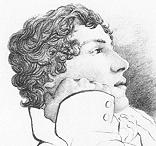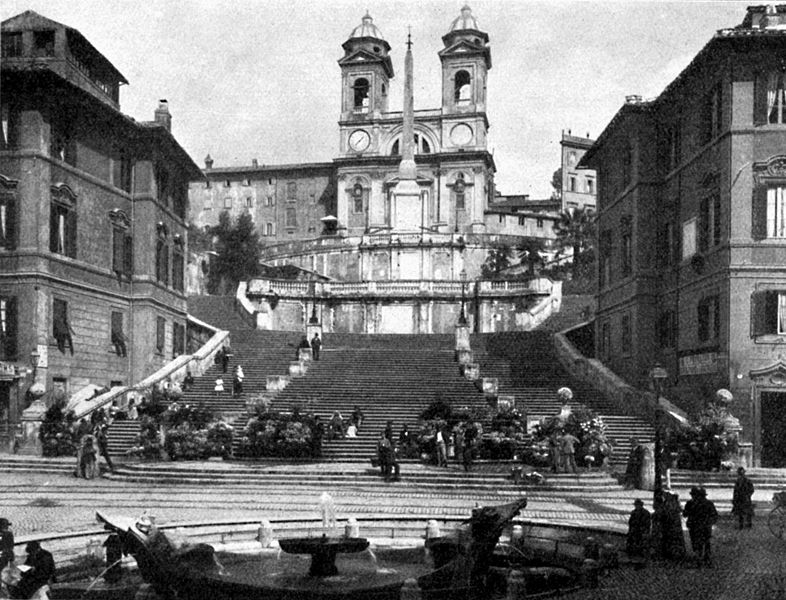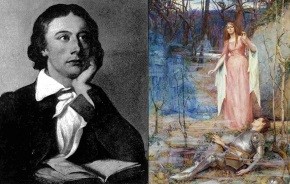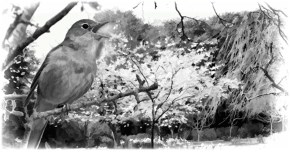
Keats, John
Although he lived to just 25 years of age, Keats’ reputation as one of the greatest poets in the English language has remained undiminished in the two centuries since his death. He was born in the East End of London in 1795; while his baptismal certificate records the date of his birth as 31st October, literary scholars have been unable to confirm with certainty that Keats was indeed born on this day. Keats and his three brothers became orphans before they left adolescence; Keats’s father, a stable-worker, died after falling off a horse, while his mother succumbed to tuberculosis just six years later. It was tuberculosis that was also to claim the life of Keats’ brother Tom and, eventually, Keats himself.While his education and training was initially in medicine, Keats was aware from an early age that his true calling was poetry. He began to train as a doctor at Guy’s Hospital in London in 1815 but left his studies just one year later in order to concentrate on his art. While studying, he had published a number of poems that exhibited early promise, including ‘An Imitation of Spenser’, written when he was just 19 years old. Encouraged by his friend Charles Cowden Clarke, who had introduced Keats to Spenser and other canonical English poets, he continued to write until he had enough poems to publish his first collection. However, Poems was a both a critical and commercial failure, drawing the ire of some prominent literary figures, who took issue with Keats’ romanticised view of nature and society. Keats responded to this criticism by finding a more enthusiastic publisher, Taylor and Hessey, who were to help Keats’ poetry find a receptive audience in the years to come.
Tragedy struck the Keats family again in 1818 when Keats’ brother Tom began to suffer from tuberculosis. Keats moved into his brother’s house in Hampstead in an effort to nurse his brother back to health, but in vain: Tom died of the same disease as his mother in December of that year. Around this time Keats also met Fanny Brawne, a young woman from Hampstead who became the great love of Keats’ life. Keats wrote a number of love letters to Fanny during his life, some of which are the most beautiful examples of the form ever written. While Keats and Fanny promised each other that they would marry, they never became formally engaged and their planned marriage was to be prevented by the onset of Keats’ terminal illness.
After the death of his brother, Keats moved to Wentworth House in Hampstead, where he wrote what became known as his ‘1819 Odes’. This period represents Keats’ most fruitful period as an artist and contains some of his best poems, including ‘Ode to a Nightingale’ and ‘Ode to Autumn’. By the time that these poems were published in 1820, however, Keats’ health was on the wane. He had been continually troubled by illness throughout his childhood and teenage years, but his contraction of tuberculosis in 1820 resulted in an unprecedented decline in his physical state. On his doctor’s advice, Keats travelled by boat from Gravesend to Rome in the hope that the warmer climate might improve his condition. However, his health continued to decline while in Italy. Knowing that he was nearing death, he decided to sever all contact with Fanny. In 1821, Keats died at the age of 25. He left behind a slender but incredibly influential body of poetry that stands as one of the pinnacles of English Romanticism.
© ZigZag Education 2026: content may be used by students for educational use if this page is referenced.
Show / hide details
| 31st October 1795 |
Keats was born
|
|
| 1803 |
Keats began school
|
|
| 1804 |
Keats’ father died
|
|
| 1810 |
Keats’ mother died
|
|
| 1814 |
Wrote his first poem
|
|
| 1815 |
Became a medical student
|
|
| February 1817 |
First collection of poems published
|
|
| June 1818 |
Keats nursed his brother
|
|
| September 1818 |
Met Fanny Brawne
|
|
| January 1819 |
Moved to Wentworth House
|
|
| June 1819 |
Became informally engaged to Fanny Brawne
|
|
| July 1820 |
Lamia, Isabella, The Eve of St Agnes, and Other Poems published
|
|
| September 1820 |
Moved to Rome |
|
| November 1820 |
Wrote last letter
|
|
| 23rd September 1821 |
Keats died
|







